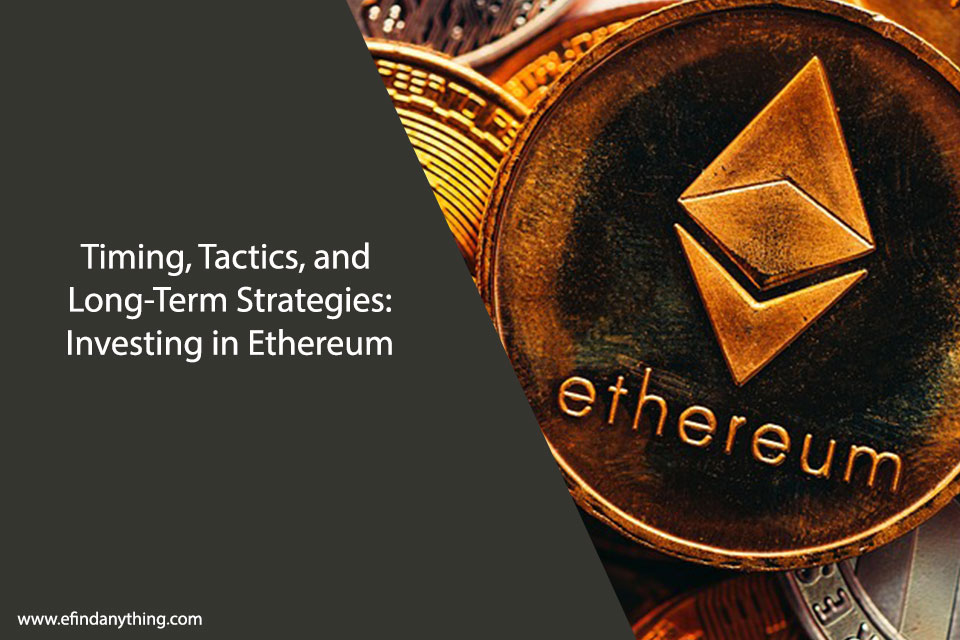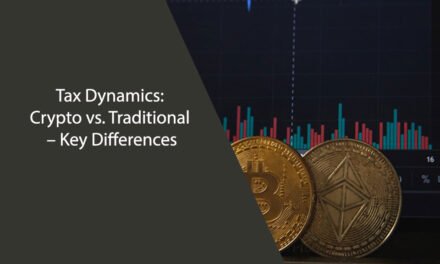
Cryptocurrency investments have surged in popularity in recent years, and Ethereum, with its versatile blockchain platform and smart contract capabilities, has emerged as a prominent player in the market. This article delves deep into the subject of investing in Ethereum, exploring the crucial aspects of timing, tactics, and long-term strategies to help you make informed investment decisions. So, if you are planning to invest in ETH, you must consider knowing about the Ethereum Blockchain and Its Uniqueness.
Table of Contents
Understanding Ethereum
Ethereum, often dubbed “the world computer,” is a decentralized blockchain platform that enables the creation of decentralized applications (dApps) through smart contracts. Understanding Ethereum’s underlying technology is essential for any prospective investor. Ethereum’s blockchain is powered by its native cryptocurrency, Ether (ETH).
Ethereum’s historical performance has been impressive. It launched in 2015 with an initial price of just a few cents per Ether, and over the years, it has experienced exponential growth, reaching an all-time high of over $4,000 in 2021. This performance underscores the potential for substantial returns on investment.
Several factors have contributed to Ethereum’s popularity in the crypto market, including its robust developer community, scalability solutions like Ethereum 2.0, and a wide range of real-world applications beyond digital currency.
Timing Your Entry
One of the most critical decisions for any investor is when to enter the market. The age-old debate between timing the market and time in the market is especially relevant in the volatile cryptocurrency space.
Analyzing historical price trends and patterns can provide valuable insights into potential entry points. Understanding market cycles, such as bull and bear markets, can help you make more informed decisions. However, it’s essential to remember that past performance does not guarantee future results.
Short-term price volatility is a hallmark of the cryptocurrency market. Factors like news events, regulatory changes, and market sentiment can lead to significant price fluctuations in a matter of hours or even minutes. To navigate this volatility, consider using tools like technical analysis, which examines price charts and patterns, and fundamental analysis, which evaluates the underlying value and potential of Ethereum.
Effective timing also involves keeping up with the latest news and developments in the cryptocurrency space. Cryptocurrency markets are highly reactive to news, and staying informed can help you make timely decisions.
Tactical Approaches to Ethereum Investment
Once you’ve determined the timing of your entry, you need to decide on your investment strategy. There are three primary tactical approaches to Ethereum investment: day trading, swing trading, and long-term holding.
Day trading involves making short-term trades, often within a single day, to profit from price fluctuations. Swing trading extends the holding period to several days or weeks, while long-term holding involves buying and holding Ethereum for an extended period, often measured in years.
Each approach has its pros and cons. Day trading offers the potential for quick gains but requires constant monitoring and carries higher risk. Swing trading offers a bit more flexibility, while long-term holding is a lower-stress strategy that relies on the potential for Ethereum’s long-term growth.
Diversification is another essential tactical consideration. Spreading your investments across different assets can help manage risk. Consider diversifying your portfolio by including other cryptocurrencies or assets like stocks and bonds.
Technical analysis and fundamental analysis are valuable tools for making tactical decisions. Technical analysis uses chart patterns, indicators, and historical price data to predict future price movements. Fundamental analysis, on the other hand, examines Ethereum’s technology, adoption, and use cases to assess its long-term potential.
Risk management is crucial in any tactical approach. Set realistic profit and loss targets, and use stop-loss orders to limit potential losses. It’s easy to get carried away by emotions in the crypto market, so having a solid risk management strategy is essential.
Long-Term Investment Strategies
While short-term trading can be profitable, long-term investment strategies also have their merits. Holding Ethereum for the long haul can provide several advantages.
Dollar-cost averaging (DCA) is a proven strategy for accumulating Ethereum over time. With DCA, you invest a fixed amount of money at regular intervals, regardless of the current price. This approach reduces the impact of market volatility and can result in a lower average purchase price.
Staking is another option for long-term investors. Ethereum 2.0 introduces staking, allowing users to lock up their Ether in exchange for rewards. Staking can provide a passive income stream while supporting the network’s security.
However, long-term investors should also be aware of tax implications. In some jurisdictions, holding and selling Ethereum may have tax consequences. Consult with a tax professional to ensure compliance with local tax laws.
Navigating Market Volatility
Market volatility is a constant in the cryptocurrency space. To navigate this volatility effectively, consider the following strategies:
- Stay Informed: Keep up with the latest news and developments to anticipate market-moving events.
- Set Realistic Goals: Define your investment goals and stick to your plan, avoiding impulsive decisions.
- Risk Management: Use stop-loss orders and position sizing to limit potential losses.
- Avoid Emotional Trading: Emotions can cloud judgment. Stick to your strategy, even in turbulent times.
Risks and Challenges
Investing in Ethereum is not without risks and challenges. Regulatory concerns and legal risks can impact the market, potentially leading to changes in how cryptocurrencies are regulated and taxed.
Security is another critical consideration. Safeguard your Ethereum holdings by using reputable wallets and exchanges and implementing best security practices, such as enabling two-factor authentication.
Additionally, the future of Ethereum and the broader crypto market remains uncertain. Technological advancements, regulatory changes, and market competition could introduce new challenges and opportunities.
Conclusion
Investing in Ethereum presents a realm of enticing opportunities, but it’s paramount to engage with a thoroughly researched strategy. Whether you opt for meticulously timing your entry, employing adept tactical trading methods, or embracing a steadfast long-term approach, it’s crucial to stay abreast of developments, skillfully mitigate risks, and remain agile in response to the ever-evolving cryptocurrency landscape. Keep in mind that flourishing in Ethereum investment demands unwavering diligence, disciplined execution, and an enduring commitment to ongoing education within this dynamic market.





